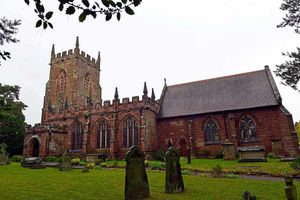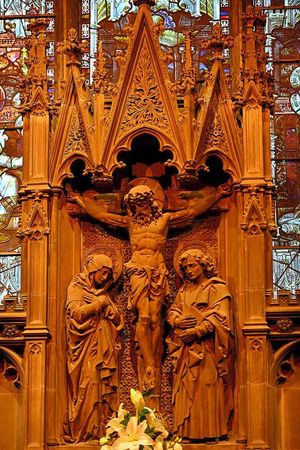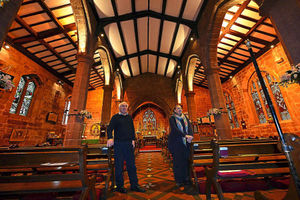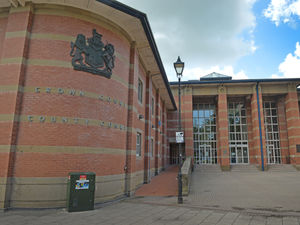Church spotlight: St Peter's Church in Edgmond
When Chris Taylor's daughter got married in 2003, there was no need for a limousine.

Instead, Chris laid a red carpet along the 200 yards or so between his house and St Peter's Church in Edgmond, near Newport, where he has been churchwarden for the past 15 years.
Chris moved to the Provost's house in Edgmond following his retirement as an oil executive in 1998, and he quickly found himself immersed in church life.

Established 1080
Main services: Sunday, 10.30am
There are three stained glass windows in the south wall of the nave by James Powell and Sons.
The Norman font is one of the most remarkable in the country, being ornamented with cable, guilloche interlacing, upright billet and other designs.
The church has a fine set of eight bells in the key of G. Records show that the church had bells as early as 1549.
When the Princess Royal was appointed the first chancellor of Harper Adams University in 2013, St Peter's hosted the ceremony, and Chris's drawing room became a robing room for the Princess.
"She was very nice," says Chris. "We had a chat, and she was reading her briefing notes. Before she came, I sent her a short history of the church."
But royalty or not, Chris says everybody who visits St Peter's is sure of a warm welcome.
"I think the atmosphere is the most important thing about a church, it is about making people feel comfortable," Chris says.
"We usually invite people to stay behind for tea and coffee at the end of the service."
St Peter's has a strong congregation, with about 40 to 50 people attending the main Sunday services – although up to 400 have been known to crowd into the building for the Christingle service on Christmas Eve.
Another popular event on the church calendar is the Clypping of the Church, which takes place on the first Sunday after St Peter's Day on June 29.
"At the end of the afternoon service the choir and churchwardens lead the congregation out of the church," says Chris.
"The congregation then forms a circle round the church and clasping hands. The choir then moves around the church inside the circle leading the congregation in singing 'We love thy place O God'."
The event, which dates back to the Middle Ages, stopped being held for many years but was revived by the Rev Charles Piggott in 1867.
"I think we are one of only two churches in the country which does it," says Chris.
While tradition suggests there was a Saxon church on the site, the existing church building of St Peter's dates from 1080.

The Grade I-listed building was enlarged in the 13th century and almost completely rebuilt during the following two centuries, re-using some of the 13th century material.
One of Chris's favourite features is the colourful west window, which was made by the renowned Birmingham manufacturer Hardman & Co.
The window was donated by Eliza Winham in memory of the Rev Charles Piggott, who was rector from 1865 to 1888.
"It depicts St Francis and the birds," says Chris.
"It uses many colours, and there is this wonderful projection of light."
He adds that the sill of the window is made from two portions of the tomb of Nicholas of Penshale, who was rector from 1381 to 1425 which is incised with the figure of a priest in his vestments.
Chris says the layout of the church is traditional apart from the chancel, which is almost as long as the nave.
The monks who lived in what is now Chris's house were probably provided with stalls in the chancel, although they had their own private chapel. Inside the church, near the entrance, is a holy water stoup with a damaged bowl which it is said was broken by roundhead troops who were garrisoned at nearby Longford Hall.

In the chancel there is a William Morris stained glass window depicting the sisters Mary and Martha, whose brother was raised from the dead by Jesus. Both women have been given halos.
In stark contrast to the 19th century stained glass windows is the Millennium Window in the north wall near the children's altar, which features engraved colourless glass.
Although the window was commissioned to mark the turn of the 21st century, it was actually installed some time later, and features a powerful image of the burning twin towers of the World Trade Centre in New York.
Below the image is a quote from St Paul's epistle to the Romans, which says: "Nothing can separate us from the love of God."




